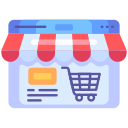Tackle real-world UX and product design challenges to build your skills and portfolio and create impactful solutions.
 SaaS
SaaS
Support teams deal with hundreds of incoming tickets daily, each varying in urgency and complexity. Manual triaging wastes time and increases the risk of missed SLAs. Managers like Eva need a system that can automatically prioritize support tickets—so the right team sees the right issue, at the right time.
 SaaS
SaaS
Customer feedback is scattered across surveys, reviews, and social media. For managers like Olivia, manually analyzing this feedback is time-consuming and inefficient. An automated tool could collect, analyze, and categorize feedback in real time, providing clear sentiment insights and empowering teams to take immediate action.
 SaaS
SaaS
Product managers often juggle requests from engineering, marketing, leadership, and users—all with different priorities. Without a central, transparent roadmap, cross-functional teams struggle to align. A collaborative roadmap tool could help teams like Sarah’s bring visibility, shared input, and structured prioritization into one unified flow.
 Fintech
Fintech
Many people are interested in investing but feel intimidated by the complexity, minimum investment requirements, and financial risk. Micro-investing platforms allow users to invest small amounts effortlessly, making investing more accessible. A well-designed micro-investing app can help users build wealth with minimal effort.
 Fintech
Fintech
Managing debt is a challenge for many users, especially those juggling multiple loans or credit card balances. Most financial apps focus on tracking debt rather than providing actionable strategies to pay it off efficiently. A tool that helps users optimize repayments, minimize interest, and visualize progress can empower them to regain financial control.
 SaaS
SaaS
Many SaaS tools have usage limits tied to plans—like number of API calls, emails sent, or collaborators added. But users often don’t realize they’re near their quota until it’s too late. A proactive quota management experience can help users stay informed, adjust behavior, or upgrade before disruption occurs.
 E-commerce
E-commerce
In marketplaces with multiple sellers (like handmade goods, vintage platforms, or food delivery), a single purchase may involve several independent vendors. But the payment experience often hides this complexity, leading to confusion over delivery, charges, and refunds. A more transparent, modular checkout flow can help users stay informed and confident.
 E-commerce
E-commerce
More shoppers want to reduce their environmental impact—but during checkout, the eco-friendly delivery option is rarely visible or well-explained. Users default to speed over sustainability because the tradeoff isn’t clear. A better delivery selector could help users feel good about their purchase without slowing them down.
 Fintech
Fintech
Users signing up for fintech services often struggle with complex identity verification (KYC) processes. They either find them too intrusive, too time-consuming, or lacking real-time feedback. A better UX can ensure compliance while improving user confidence.
 SaaS
SaaS
Many SaaS platforms offer integrations and add-ons to expand their functionality. However, plugin marketplaces are often overwhelming, with unclear value props, inconsistent quality, and poor discoverability. A better experience could help users find the right tools faster—and extend their platform without needing engineering support.
 Fintech
Fintech
Loan marketplaces and platforms often overwhelm users with options—or worse, recommend loans that aren’t relevant. Users need clarity, not just offers. A guided, needs-based loan discovery flow can help users understand what’s right for them based on their situation, not just what’s available.
 SaaS
SaaS
Sales teams waste valuable time chasing leads that never convert. Traditional lead scoring models are static and unreliable. Sales leaders like Patrick need a smarter way to identify high-potential leads using behavioral signals and contextual data—without relying on gut instinct or outdated spreadsheets.
 Fintech
Fintech
Many first-time borrowers struggle with confusing loan application processes, unclear eligibility requirements, and overwhelming financial jargon. Traditional banking interfaces make it difficult for users to compare options and understand loan terms. A more transparent and user-friendly experience can help borrowers navigate the process confidently and make informed financial decisions.
 Fintech
Fintech
Many users want to donate to charities but face difficulties in finding trustworthy organizations, tracking donations, and managing recurring contributions. Current platforms lack transparency, impact tracking, and personalization in donation experiences. A better donation management tool can improve charitable giving accessibility
Connect with other professionals, get feedback on your work, find accountability partners, and grow your skills together. Our community helps you stay motivated and improve faster